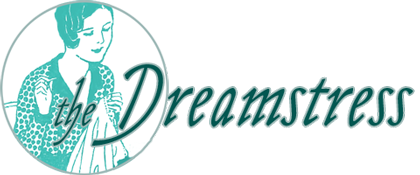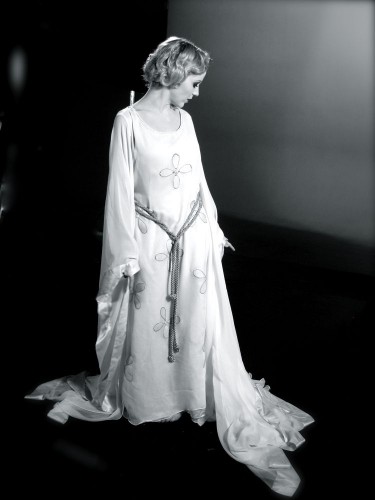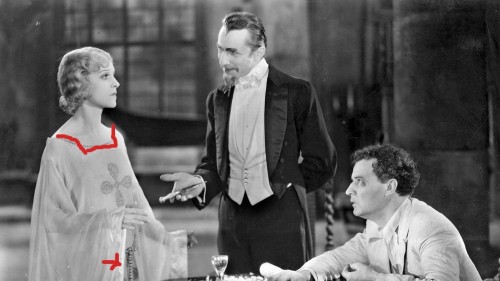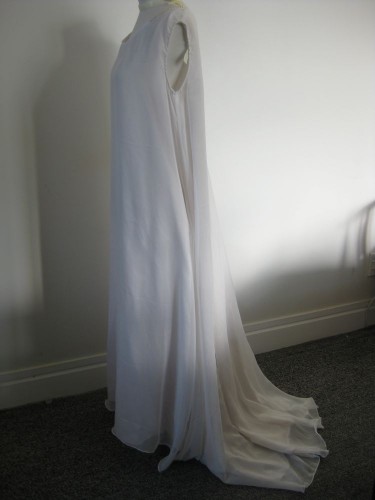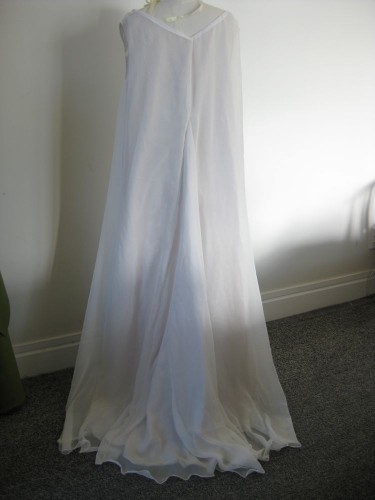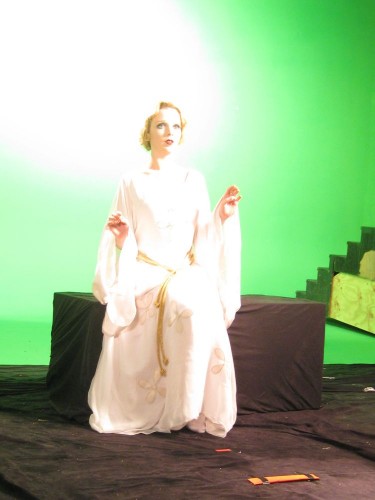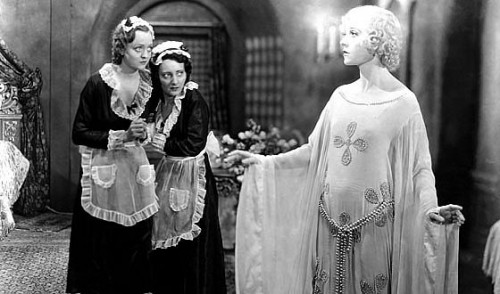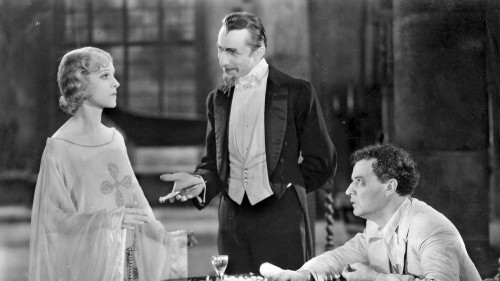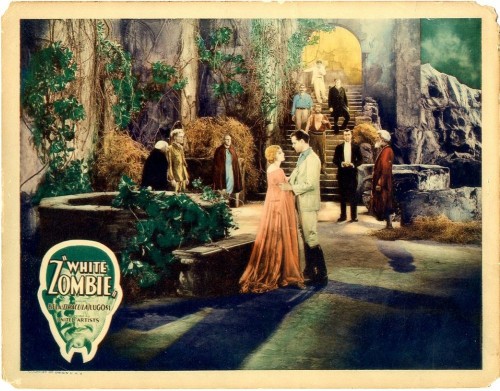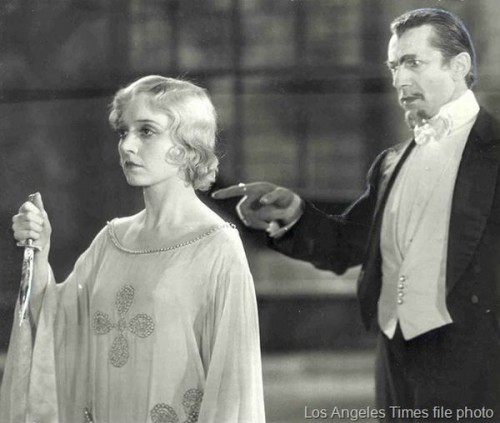This is how I made a 1920s-does-medieval shift for the White Zombie inspired PorcelainToy music video.
First, I watched White Zombie literally two dozen times, analyzing how Madge’s dress was constructed.
This is what I noted:
The dress is made of chiffon, almost certainly silk. It is worn over a satin shift/underdress cut straight across the chest, with thin straps over the shoulders. In some scenes Madge appears to be wearing a different underdress, one with a v-neckline. This one one of dozens of continuity problems with the outfit.
The dress has wide rectangular sleeve panels attached at a drop shoulder. The sleeves are bound with wide satin edging (note arrow).
The front of the dress is quite slim, but the back of the dress is extremely full, and must have gores set into it.
The wide rectangular sleeves have little cut in points indicated in red above. This means the panels are long rectangles with a ) scoop cut out of the middle, and the middle of the scoop sits on the shoulders.
This is my shift without the sleeves shown on.
My gown has two major differences from the original:
The first change is the undergown neckline. I cut the undergown with the same neckline as the chiffon over-layer. This helped with fitting, and with getting the neckline to fall right without warping. Elisabeth is also bustier than Madge, so more coverage allowed for more support.
The second change has to do with the sleeves, and the super wide sleeve panels with curves cut out. Due to fabric sourcing issues (I couldn’t find anyone, in NZ or overseas, who could get me a full 18 metres of white silk chiffon in time for the shoot – so I had to make do with 11) I had to cut my fabric panels in half, and didn’t have wide enough fabric to cut out the scoops.
And yes, the overdress takes a full 11 metres of 45″ wide chiffon! Most of the fabric is in the sleeves, and it the back gore, which is massive.
On Wednesday I’ll tell you about what it’s like to be on a film set, and on Thursday I’ll show you a bunch of amazing photos from a shoot I did with Elisabeth in the dress, but first we have ‘Rate the Dress’.
